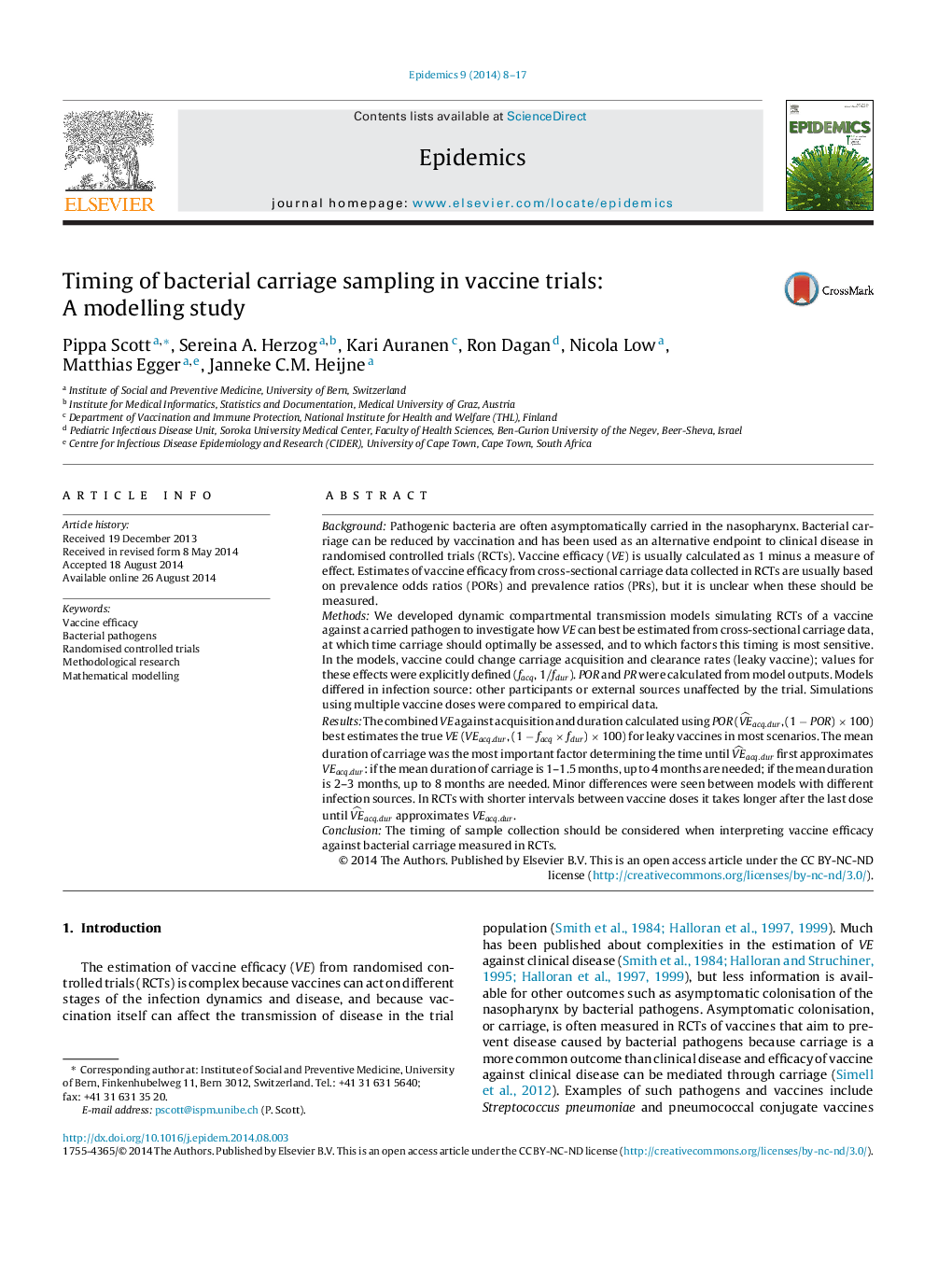| کد مقاله | کد نشریه | سال انتشار | مقاله انگلیسی | نسخه تمام متن |
|---|---|---|---|---|
| 2813591 | 1569438 | 2014 | 10 صفحه PDF | دانلود رایگان |
• We simulated trials of vaccines against carriage of bacterial pathogens.
• We examined the time at which vaccine efficacy against carriage (VE) is best measured.
• There is a period after vaccination during which calculated VE underestimates true VE.
• The length of this period is most affected by the mean duration of carriage.
• Timing of sampling is important when interpreting vaccine efficacy against carriage.
BackgroundPathogenic bacteria are often asymptomatically carried in the nasopharynx. Bacterial carriage can be reduced by vaccination and has been used as an alternative endpoint to clinical disease in randomised controlled trials (RCTs). Vaccine efficacy (VE) is usually calculated as 1 minus a measure of effect. Estimates of vaccine efficacy from cross-sectional carriage data collected in RCTs are usually based on prevalence odds ratios (PORs) and prevalence ratios (PRs), but it is unclear when these should be measured.MethodsWe developed dynamic compartmental transmission models simulating RCTs of a vaccine against a carried pathogen to investigate how VE can best be estimated from cross-sectional carriage data, at which time carriage should optimally be assessed, and to which factors this timing is most sensitive. In the models, vaccine could change carriage acquisition and clearance rates (leaky vaccine); values for these effects were explicitly defined (facqfacq, 1/fdur1/fdur). POR and PR were calculated from model outputs. Models differed in infection source: other participants or external sources unaffected by the trial. Simulations using multiple vaccine doses were compared to empirical data.ResultsThe combined VE against acquisition and duration calculated using POR (VEˆacq.dur, (1−POR)×100(1−POR)×100) best estimates the true VE (VEacq.durVEacq.dur, (1−facq×fdur)×100(1−facq×fdur)×100) for leaky vaccines in most scenarios. The mean duration of carriage was the most important factor determining the time until VEˆacq.dur first approximates VEacq.durVEacq.dur: if the mean duration of carriage is 1–1.5 months, up to 4 months are needed; if the mean duration is 2–3 months, up to 8 months are needed. Minor differences were seen between models with different infection sources. In RCTs with shorter intervals between vaccine doses it takes longer after the last dose until VEˆacq.dur approximates VEacq.durVEacq.dur.ConclusionThe timing of sample collection should be considered when interpreting vaccine efficacy against bacterial carriage measured in RCTs.
Journal: Epidemics - Volume 9, December 2014, Pages 8–17
